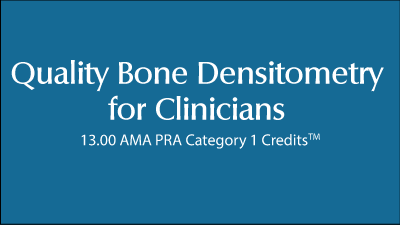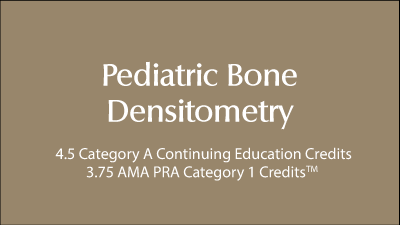Learning Objectives
After participating in the ISCD Orthopedic Osteoporosis and Densitometry Course, participants will be able to:
- Understand various pharmacological treatments available and treatment algorithms.
- Understand and implement the recommendation of the four “pillars”.
- Describe the principles of using DXA as a monitoring tool and understand which densitometric method to use.
Target Audience
The ISCD Orthopedic Densitometry Course is designed for healthcare professionals with an interest in orthopedics, osteoporosis, and bone health across the lifespan, including those working in orthopedics, radiology and diagnostic imaging, physical and occupational therapy, public health, and research. These include physicians, nurses, nurse practitioners, physician assistants, radiology technologists, physical therapists, and occupational therapists.
Continuing Medical Education Credits
ISCD intends to offer this activity for AMA PRA Category 1 CreditsTM. As accreditation standards are updated regularly, the amount of credit awarded changes in accordance with the adjustments made to the standards. To view credit awarded or anticipated for a specific offering, please refer to the upcoming course you’d like to register for.
Interested in offering this course Internationally?
ISCD offers Local Organizing Committees (LOC) he opportunity to license and offer specific ISCD educational programs. The orthopedic course offers two options: a half-day course comprising seven lectures, and a more comprehensive full-day course featuring 10 lectures and two case study lectures. For more information on pricing and available courses, please visit our LOC Information Page. After reviewing the details, you can complete and submit the LOC Application to request an agreement.
Full-day Course Lectures:
- Understanding DXA and Its Indications
- DXA Acquisition and Interpretation
- Advanced DXA and Clinical Bone Strength Measurement Methods
- Fracture Risk Assessment
- Pharmacological Treatment of Osteoporosis
- Osteoporosis Treatment Monitoring
- Sarcopenia, Frailty, Fall Risk Assessment/Fall Prevention
- Secondary Fracture Prevention Program (Fracture Liaison Service-FLS)
- Atypical Femoral Fractures (AFF) Prevention, Diagnosis, and Treatment
- Case Studies



